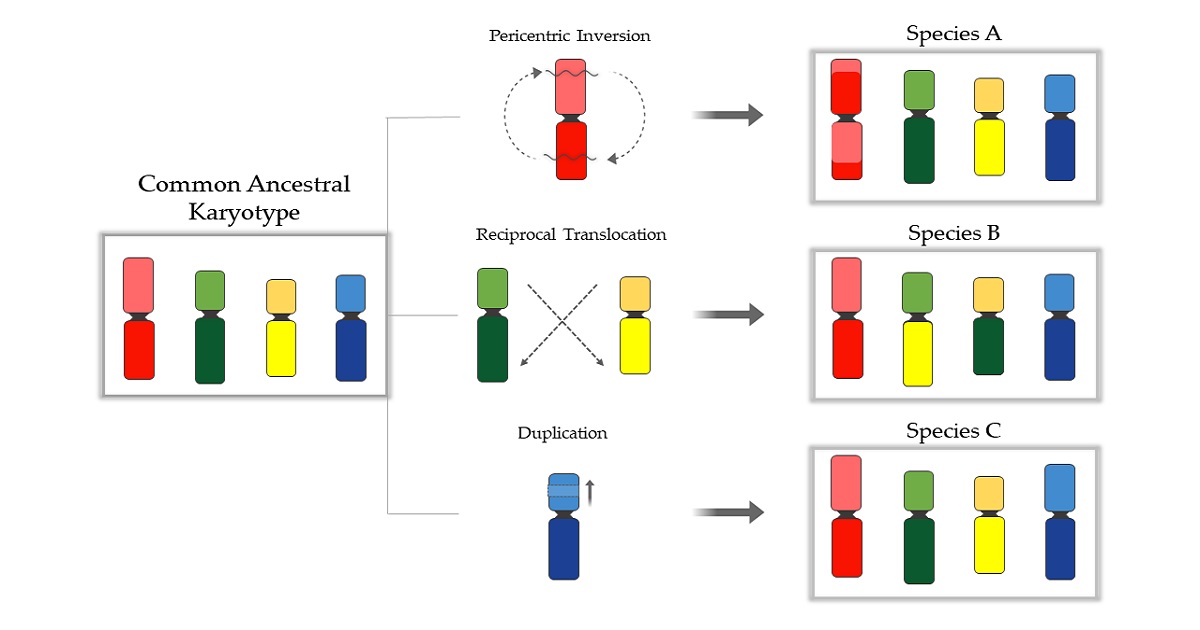Dynamics of Chromosome Evolution across Animals and Plants: Advances, Insights, and Prospects
A special issue of Life (ISSN 2075-1729). This special issue belongs to the section "Genetics and Genomics".
Deadline for manuscript submissions: closed (1 June 2023) | Viewed by 2590

Special Issue Editors
Interests: chromosome; chromosomal evolution; sex chromosomes; animal cytogenetics; in situ hybridization; interspecies hybridization; polyploidy; asexuality; Xenopus, Carassius; Sanger sequencing; Next generation sequencing
Interests: chromosome evolution; karyotype organization; speciation; diversification; comparative cytogenomic mapping; plant cytogenetics; oligonucleiotides; fluorescent in situ hybridization; oligo-FISH
Special Issue Information
Dear Colleagues,
The tempo of chromosomal evolution differs in different species and taxa. What is the cause and consequence of a variability in chromosomal evolution dynamics among species? Chromosomal rearrangements, such as inversions, translocations, duplication, and deletion, could serve as a driver of chromosomal evolution, karyotype organization, and species diversification, helping to physically trace the evolutionary paths within and/or between taxa. For example, when a chromosomal region is translocated on another chromosome, two chromosomes fuse in one, one chromosome undergoes fission onto more fragments, or a chromosomal segment is inverted within single chromosomes with effects in evolution such as recombination suppression or a new speciation event. This issue focuses on the structural changes in both autosomal and sex chromosomes in animals and plants, and on approaches that show how chromosomal evolution can elucidate the dynamics, speciation, and diversification among closely and distantly related species, as well as how chromosomal rearrangements that influence the evolution of sex determination systems and sex differentiation can contribute to the understanding dynamics of chromosomal evolution. Conventional and advanced molecular cytogenetics using different types of specific fluorescent in situ hybridization (FISH) probes, numerous state-of-the-art omics techniques and combinations of them have been used to study chromosome evolution in general, which is the main subject of this issue.
Dr. Martin Knytl
Dr. Lívia Do Vale Martins
Guest Editors
Manuscript Submission Information
Manuscripts should be submitted online at www.mdpi.com by registering and logging in to this website. Once you are registered, click here to go to the submission form. Manuscripts can be submitted until the deadline. All submissions that pass pre-check are peer-reviewed. Accepted papers will be published continuously in the journal (as soon as accepted) and will be listed together on the special issue website. Research articles, review articles as well as short communications are invited. For planned papers, a title and short abstract (about 100 words) can be sent to the Editorial Office for announcement on this website.
Submitted manuscripts should not have been published previously, nor be under consideration for publication elsewhere (except conference proceedings papers). All manuscripts are thoroughly refereed through a single-blind peer-review process. A guide for authors and other relevant information for submission of manuscripts is available on the Instructions for Authors page. Life is an international peer-reviewed open access monthly journal published by MDPI.
Please visit the Instructions for Authors page before submitting a manuscript. The Article Processing Charge (APC) for publication in this open access journal is 2600 CHF (Swiss Francs). Submitted papers should be well formatted and use good English. Authors may use MDPI's English editing service prior to publication or during author revisions.
Keywords
- chromosomal rearrangements
- synteny
- chromosome evolution
- karyotype organization
- speciation
- species’ diversification
Benefits of Publishing in a Special Issue
- Ease of navigation: Grouping papers by topic helps scholars navigate broad scope journals more efficiently.
- Greater discoverability: Special Issues support the reach and impact of scientific research. Articles in Special Issues are more discoverable and cited more frequently.
- Expansion of research network: Special Issues facilitate connections among authors, fostering scientific collaborations.
- External promotion: Articles in Special Issues are often promoted through the journal's social media, increasing their visibility.
- e-Book format: Special Issues with more than 10 articles can be published as dedicated e-books, ensuring wide and rapid dissemination.
Further information on MDPI's Special Issue polices can be found here.







